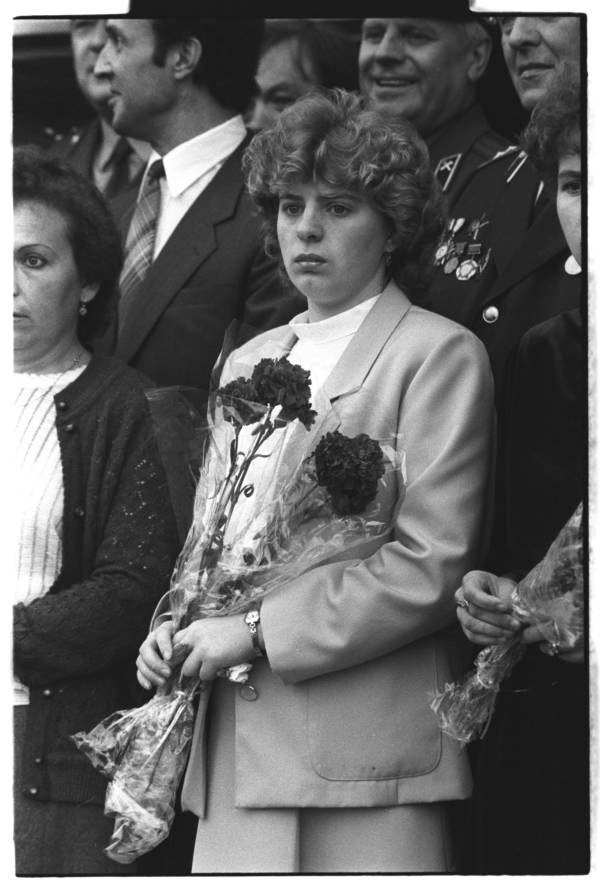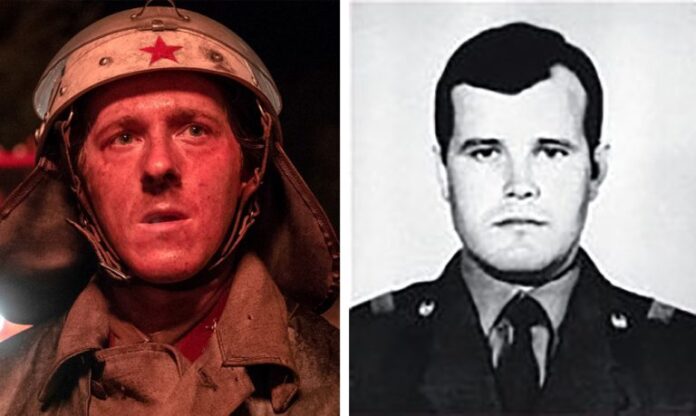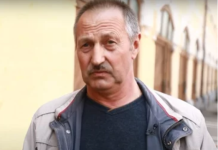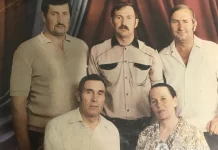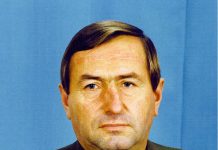Sergeant Vasily Ignatenko was a member of the Third Watch of Paramilitary Fire Station Number Six in Pripyat and was only 28 years old at the time of the Chornobyl disaster. That fateful night, Ignatenko worked side by side with Lieutenant Pravik of Paramilitary Fire Brigade Number Two trying to extinguish fires on the roof of Reactor Three and around the ventilation shaft. Together with several other firefighters, they got closest to the exposed core of Reactor Four. With the symptoms of a serious acute radiation syndrome (ARS), on the same day of the accident Ignatenko, Pravik, and several others were flown on the plane from Kyiv to Hospital Number Six in Moscow.
The hospital was a central facility of the USSR in radiobiology and radiation accidents treatment. Dr. Angelina Guskova was the head of the clinical department of it at the time. On the morning of May 1, four days after the accident, Guskova summoned Vasily’s wife Ludmila Ignatenko to her sixth-floor office and explained that it would be necessary to conduct a bone marrow transplant on her husband. A marrow donor from Vasily’s immediate family was now required to save his life. Guskova also informed Ludmila that Vasily’s closest relatives were already en route to Moscow for this purpose. A. Higginbotham in his ‘Midnight in Chernobyl‘: “When Vasily Ignatenko heard that his younger sister Natalia was the best candidate for donation, he refused permission for the doctors to proceed. “I won’t accept bone marrow from Natasha!” he said. “I’d rather die!” Even when his wife explained that it would cause her no long-term harm, Ignatenko resisted. Eventually, his older sister Lyuda submitted to the procedure instead…
After he had received the transfusion from his older sister, Vasily Ignatenko was transferred to the eighth floor and placed in a life island. The staff tried to keep his wife out, but Ludmilla got in anyway, reaching into the bubble to moisturize his lips. Young soldiers now came to his room instead of nurses, wearing gloves to give him injections and disposing of blood and plasma. No one wanted to be in the room anymore—perhaps, Ludmilla thought, for fear of contamination. Some of the staff, especially the younger ones, had become irrationally terrified of the patients and believed that the radiation disease was somehow infectious, like the plague. Ignatenko recovered quickly from the transplant procedure. But his overall condition had already begun a sudden and frightening slide. His appearance changed from minute to minute: his skin changed color, his body became distended…
On Tuesday, May 13, Ludmilla Ignatenko took the bus out to Mitino cemetery in the northwest suburbs of Moscow with her friends Nadia Pravik and Tanya Kibenok, whose husbands had died two days earlier. She watched as the men’s bodies were lowered into the ground. Ludmilla had left the hospital at nine that morning to prepare for the journey but gave instructions to the nurses to tell Vasily that she was merely taking a rest. By the time she returned to Hospital Number Six that afternoon, her husband, too, was dead. The morticians who came to prepare him for burial found his body so swollen they couldn’t get him into his uniform. When he was eventually laid to rest beside his comrades in Mitino, the young fireman’s corpse was sealed inside two thick plastic bags, a wooden coffin, and a zinc box.”
